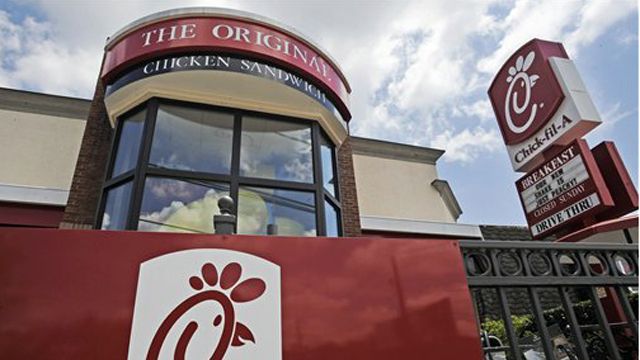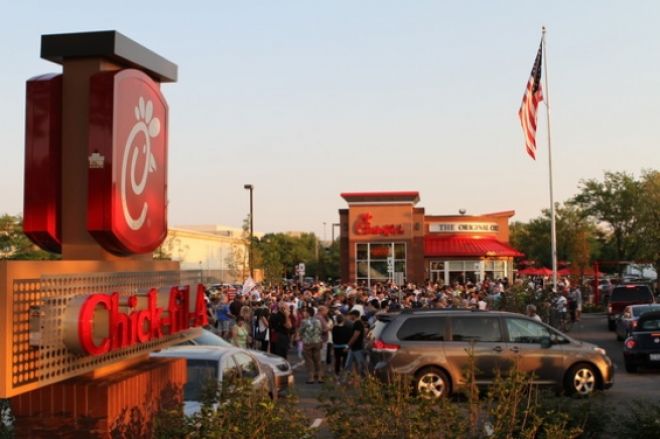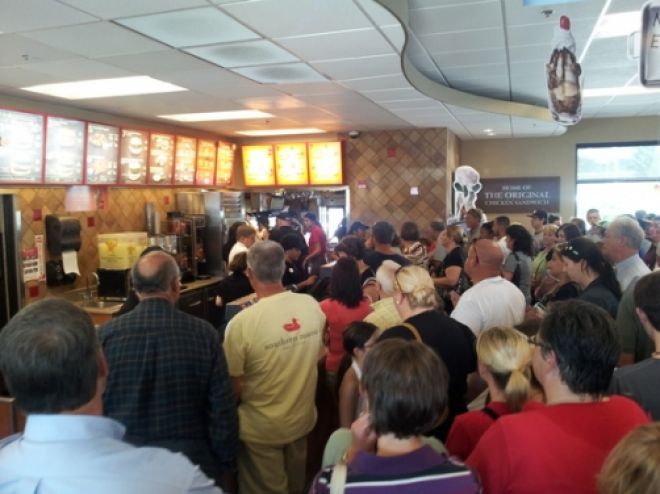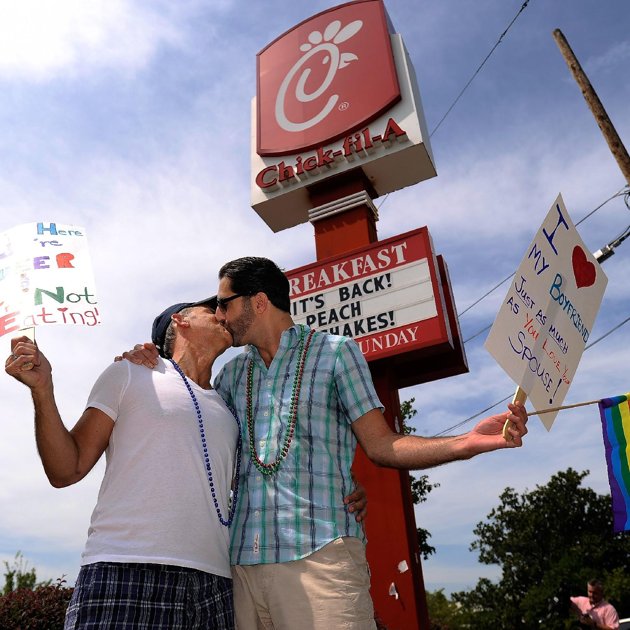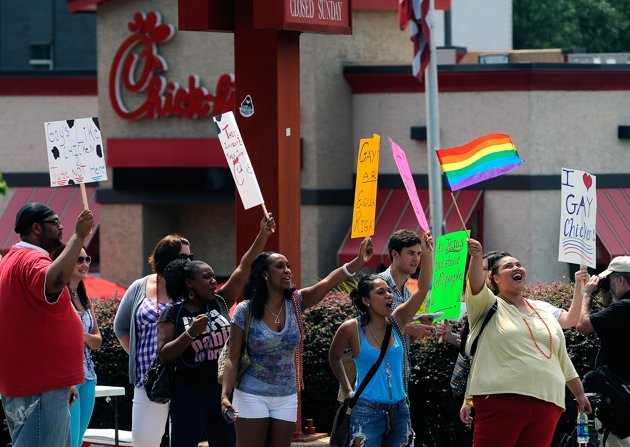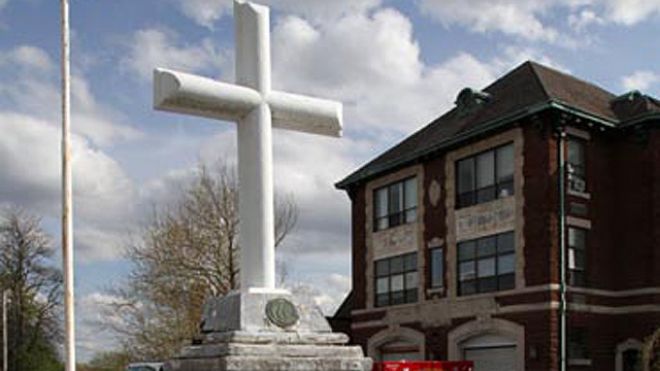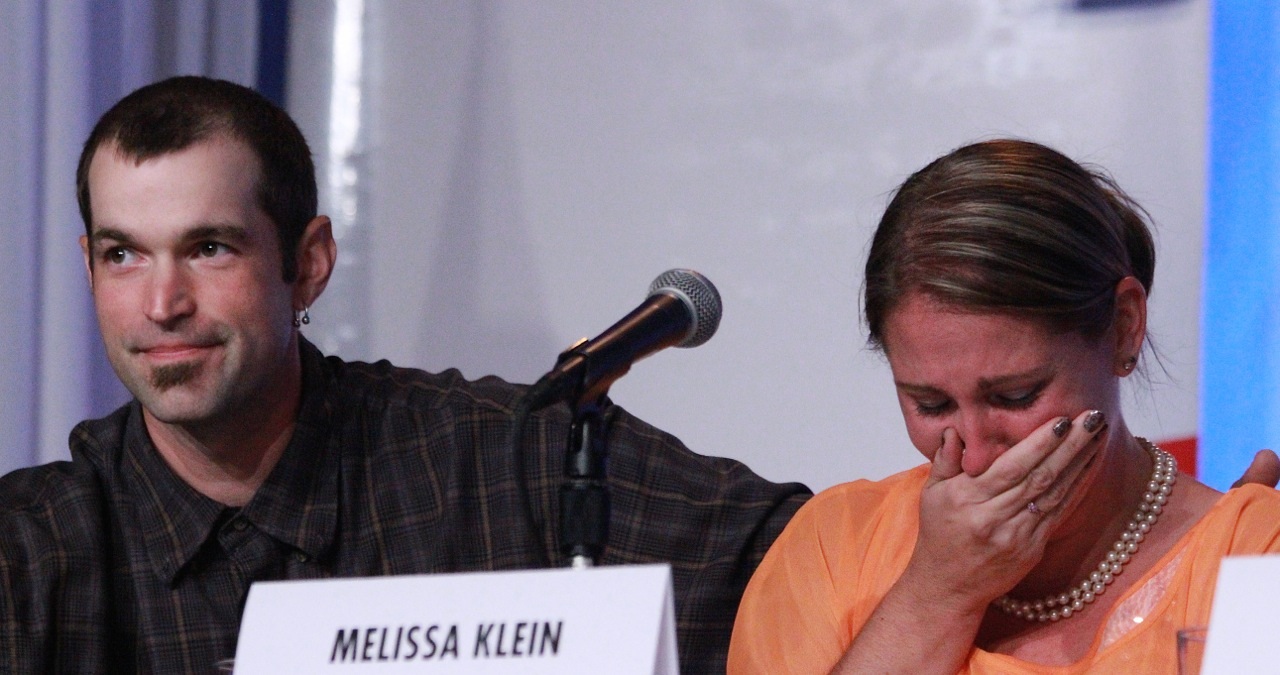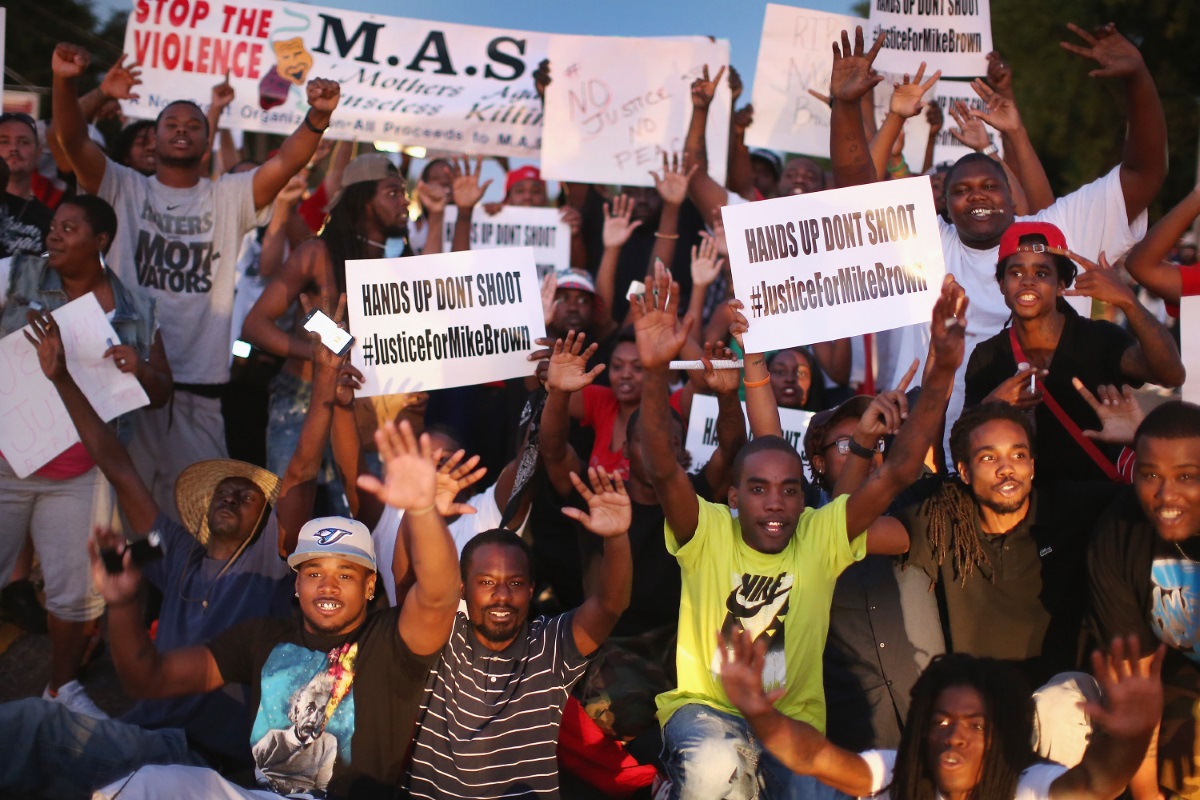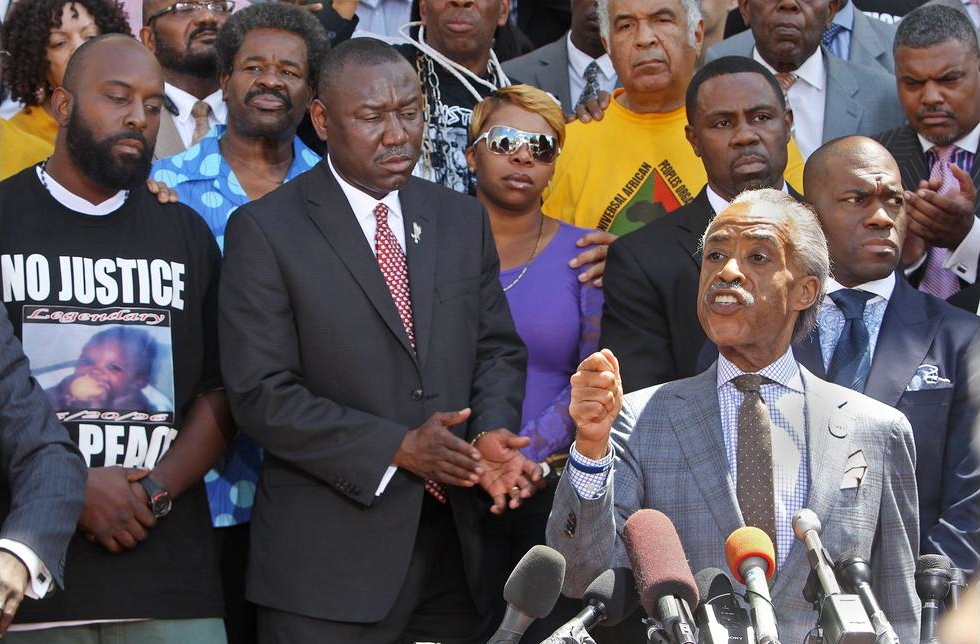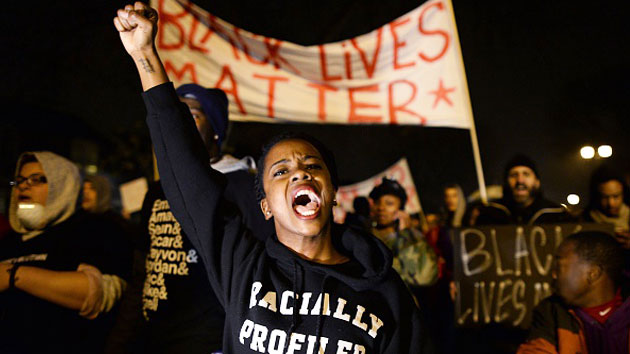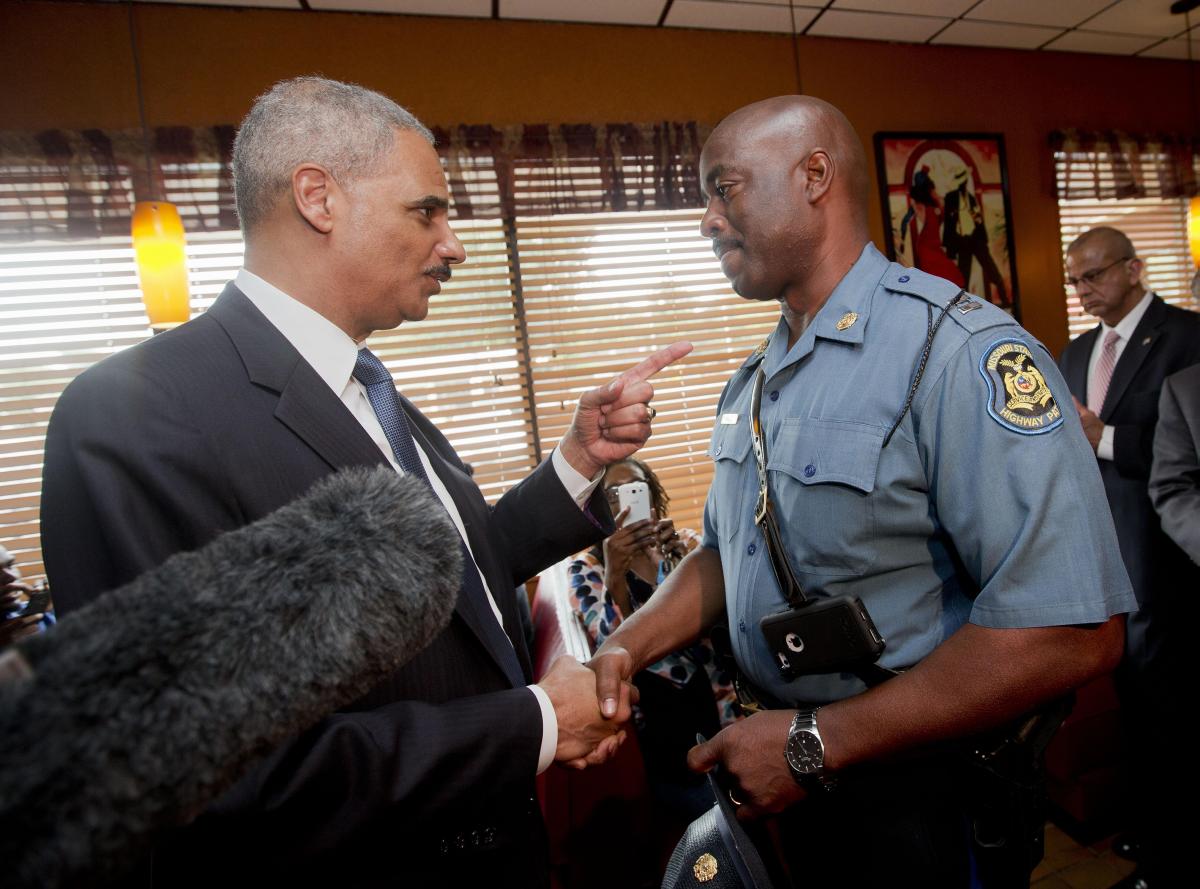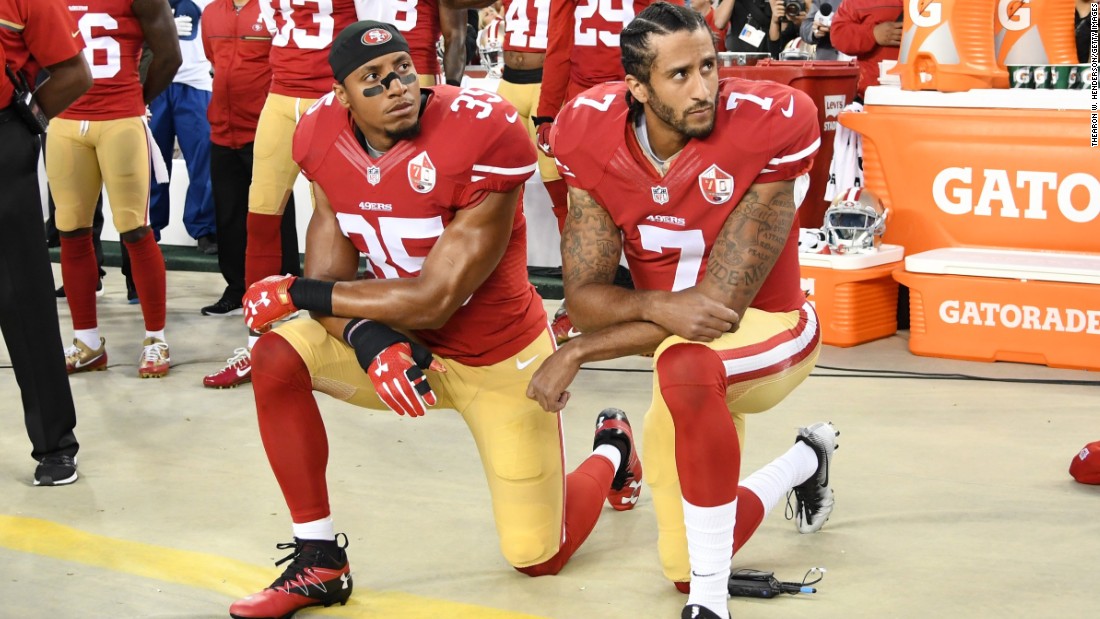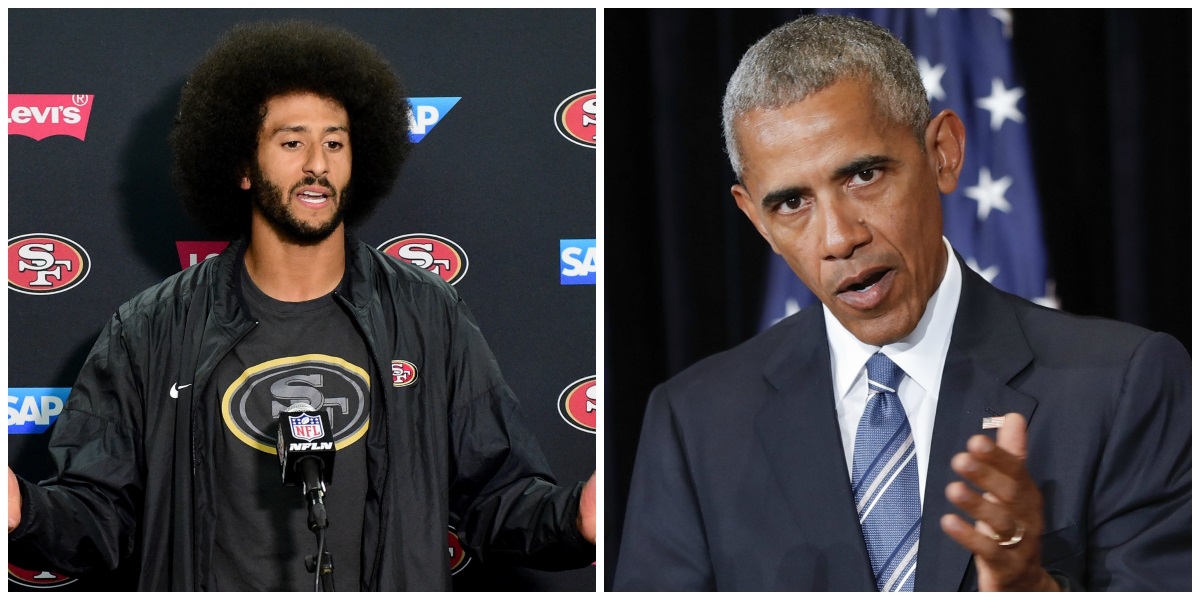27. OBAMA SEEKS TO "CHANGE" AMERICA

THE CULTURAL SPLIT DEEPENS

THE CULTURAL SPLIT DEEPENS
 The bullying of Christians by the
The bullying of Christians by thepro-homosexual community
 Race relations worsen in the US
Race relations worsen in the US
 To kneel or stand at attention before the
To kneel or stand at attention before the
flag?
The textual material on this webpage is drawn directly from my work
America – The Covenant Nation © 2021, Volume Two, pages 439-445.
THE BULLYING OF CHRISTIANS BY THE PRO-HOMOSEXUAL COMMUNITY |
THE
2012 ELECTIONS |
|
Four years had now gone by since Obama took office as president and began to put into play his strategy for deep social change in America. His Republican opponent was, interestingly enough, not exactly the proto-type WASP – because he was Mormon rather than a standard American Protestant. In the end, it probably did not make a great deal of difference, because Obama would be re-elected by a natural tendency of Americans to vote on the basis of the sub-cultural groups that Obama had cultivated (or opposed) so strongly in his quest for "change." Thus for instance, in a CNN exit poll conducted with 26,565 respondents, 93 percent of the Blacks voted for Obama (but constituting only 13 percent of all voters), while only 39 percent of the Whites (constituting 72 percent of the voters) did so. Likewise 71 percent of the Latinos (10 percent of the voters) and 73 percent of those of Asian background (3 percent of the voters) voted for Obama. American women (actually 53 percent of the voters!) tended also to vote for Obama, 55 percent compared to 44 percent for Romney – whereas the men were just the opposite, 52 percent voting for Romney against 44 percent who voted for Obama. Age also made a difference, younger Americans voting for Obama (as much as 60 percent of the youngest or 18-29 age group) while older Americans (65 and over) voted in favor of Romney (56 percent against 44 percent for Obama). Most interesting, although completely understandable in terms of America's cultural profile, those with little education voted strongly in favor of Obama, whereas those with a college degree voted for Romney (51 percent). But at the highest educational level, those holding post-graduate degree (America's intellectuals or 18 percent of those voting), the profile was reversed, with 55 percent voting for Obama opposed to only 42 percent voting for Romney. Urban America supported Obama 62 percent to 36 percent for Romney; suburban America 50 percent for Romney and 48 percent for Obama and in rural America 59 percent voted for Romney and 39 percent for Obama. Income levels mattered as well, with those making less than $50,000 a year voting 60 percent for Obama; those with incomes above that level voted 53 percent in favor of Romney. Then besides the racial divide, the next largest divide was on the basis of religion. Those attending church regularly (42 percent of the voters) voted in favor of Romney by 59 percent; those never attending (17 percent of the voters) voted for Obama by 62%. Those attending occasionally tended to vote for Obama. But those who identified themselves as White born-again Christians (about a quarter of those who voted) voted 78 percent for Romney. In any case 51.1 percent of the total vote went to Obama with 47.2 percent going to Romney (and less than 2 percent "other"). The electoral vote was 332 votes for Obama and 206 for Romney.
|
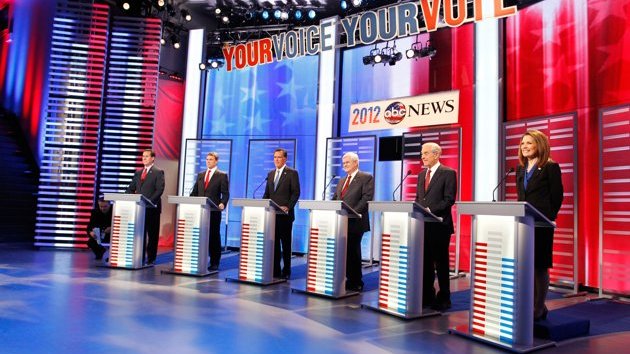
The televised Republican
Party debates – (this one on December 10, 2011)
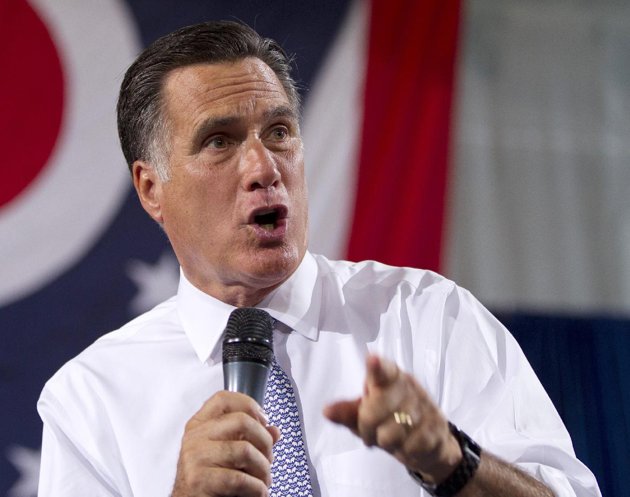
AP – photo by Evan Vucci
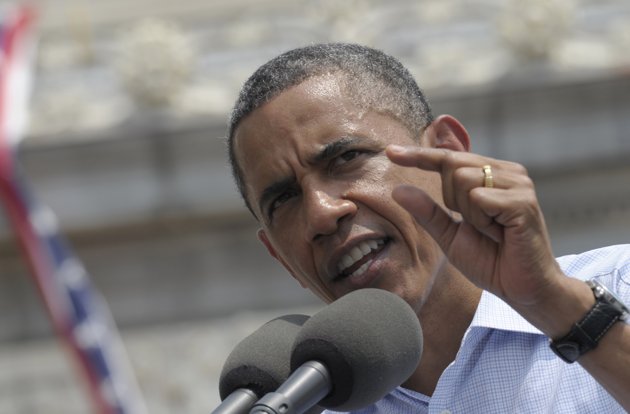
photo by Susan Walsh
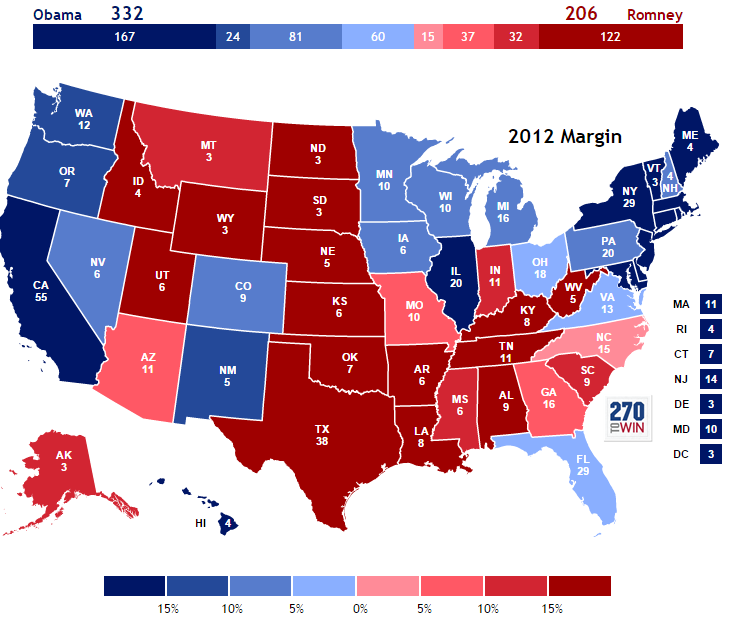
|
The
results of the November election were a rather strong Obama victory:
51.1% of the popular vote for Obama (and Biden) to 47.2% for
Romney (and Ryan) ... and 332 electoral votes to 206 votes for the
candidates. In the Congressional races, the Republicans were able
to keep a 234 to 201 seat majority in the House of Representatives.
The Democrats on the other hand were able to increase their
majority in the Senate by two seats, 53 to 45 (plus two independents).
| ||||||||||||||||||||||||||||||||||||||||||||||||||||||||||||||||||||||||||||||||||||||||||||||||||||||||||||||||||||||||||||||||||||||||||||||||||||||||||||||||||||||||||||||||||||||||||||||||||||||||||||||||||||||||||||||||||||||||||||||||||||||||||||||||||||||||||||||||||||||||||||||||||||||||||||||||||||||||||||||||||||||||||||||||||||||||||||||||||||||||||||||||||||||||||
| 2012 Presidential vote by demographic subgroup | |||||||
|---|---|---|---|---|---|---|---|
| Demographic subgroup | Obama | Romney | Other | % of total vote | |||
| Total vote | 51 | 47 | 2 | 100 | |||
| Ideology | |||||||
| Liberals | 86 | 11 | 3 | 25 | |||
| Moderates | 56 | 41 | 3 | 41 | |||
| Conservatives | 17 | 82 | 1 | 35 | |||
| Party | |||||||
| Democrats | 92 | 7 | 1 | 38 | |||
| Republicans | 6 | 93 | 1 | 32 | |||
| Independents | 45 | 50 | 5 | 29 | |||
| Gender | |||||||
| Men | 45 | 52 | 3 | 47 | |||
| Women | 55 | 44 | 1 | 53 | |||
| Gender by marital status | |||||||
| Married men | 38 | 60 | 2 | 29 | |||
| Married women | 46 | 53 | 1 | 31 | |||
| Single men | 56 | 40 | 4 | 18 | |||
| Single women | 67 | 31 | 2 | 23 | |||
| Race/ethnicity | |||||||
| White | 38 | 60 | 2 | 72 | |||
| Black | 93 | 6 | 1 | 13 | |||
| Asian | 73 | 26 | 1 | 3 | |||
| Other | 58 | 38 | 4 | 2 | |||
| Hispanic | 71 | 27 | 2 | 10 | |||
| Religion | |||||||
| Protestant or other Christian | 43 | 56 | 1 | 51 | |||
| Catholic | 50 | 48 | 2 | 25 | |||
| Mormon | 21 | 78 | 1 | 2 | |||
| Jewish | 69 | 30 | 1 | 2 | |||
| Other | 74 | 23 | 3 | 7 | |||
| None | 70 | 26 | 4 | 12 | |||
| Religious service attendance | |||||||
| More than once a week | 36 | 63 | 1 | 14 | |||
| Once a week | 41 | 58 | 1 | 28 | |||
| A few times a month | 55 | 44 | 1 | 13 | |||
| A few times a year | 56 | 42 | 2 | 27 | |||
| Never | 62 | 34 | 4 | 17 | |||
| White evangelical or born-again Christian? | |||||||
| White evangelical or born-again Christian | 21 | 78 | 1 | 26 | |||
| Everyone else | 60 | 37 | 3 | 74 | |||
| Age | |||||||
| 18–24 years old | 60 | 36 | 4 | 11 | |||
| 25–29 years old | 60 | 38 | 2 | 8 | |||
| 30–39 years old | 55 | 42 | 3 | 17 | |||
| 40–49 years old | 48 | 50 | 2 | 20 | |||
| 50–64 years old | 47 | 52 | 1 | 28 | |||
| 65 and older | 44 | 56 | 0 | 16 | |||
| Sexual orientation | |||||||
| LGBT | 76 | 22 | 2 | 5 | |||
| Heterosexual | 49 | 49 | 2 | 95 | |||
| Education | |||||||
| Not a high school graduate | 64 | 35 | 1 | 3 | |||
| High school graduate | 51 | 48 | 1 | 21 | |||
| Some college education | 49 | 48 | 3 | 29 | |||
| College graduate | 47 | 51 | 2 | 29 | |||
| Postgraduate education | 55 | 42 | 3 | 18 | |||
| Family income | |||||||
| Under $30,000 | 63 | 35 | 2 | 20 | |||
| $30,000–49,999 | 57 | 42 | 1 | 21 | |||
| $50,000–99,999 | 46 | 52 | 2 | 31 | |||
| $100,000–199,999 | 44 | 54 | 2 | 21 | |||
| $200,000–249,999 | 47 | 52 | 1 | 3 | |||
| Over $250,000 | 42 | 55 | 3 | 4 | |||
| Region | |||||||
| Northeast | 59 | 40 | 1 | 18 | |||
| Midwest | 51 | 48 | 2 | 24 | |||
| South | 46 | 53 | 1 | 36 | |||
| West | 54 | 43 | 3 | 22 | |||
| Community size | |||||||
| Big cities (population over 500,000) | 69 | 29 | 2 | 11 | |||
| Mid-sized cities (population 50,000 to 500,000) | 58 | 40 | 2 | 21 | |||
| Suburbs | 48 | 50 | 2 | 47 | |||
| Towns (population 10,000 to 50,000) | 42 | 56 | 2 | 8 | |||
| Rural areas | 37 | 61 | 2 | 14 | |||
RACE
RELATIONS WORSEN IN THE US |
|
The Ferguson Missouri shooting
On Saturday afternoon, August 2014, after returning from a store where he had seized a package of cigars and threatened the owner of the store when confronted about the theft, Michael Brown and a friend were walking down the middle of the street when patrolman Darren Wilson ordered them to move to the sidewalk. Brown was in no mood to obey and when Brown came up to the squad car, a scuffle resulted and Wilson's gun went off inside the squad car. Brown's friend with him at the time reported that Brown had been grabbed by Wilson, who tried to pull him into the car (??? Brown was about twice the size of Officer Wilson!), Wilson then shot Brown in the back as he was retreating, then Brown turned and held his hands in the air saying "don't shoot," but Wilson shot and killed him anyway. Hearing this story, over the next days, Ferguson Blacks (visited by the "Reverend" Al Sharpton, who always knows how to show up for just such events) began to protest, then pillage, then burn, as riot police gathered to try to protect property from the rioters. Amazingly no one was killed in the riots. But protests immediately spread to other cities, not only as Blacks turned out to protest "police brutality" (chanting the now-famous words "hands up, don't shoot") but as university students (such as those at nearby St. Louis University) found a new cause to demonstrate for racial justice and the end to poverty. President Obama could not resist weighing in on the event and sent his Attorney General Eric Holder, who arrived in Missouri to comfort the Blacks who suffered under police prejudice, explaining that he himself experienced such racism and thus could feel their pain. Anyway, that was the proclaimed theme of Holder's presence there. Holder also promised that the Department of Justice would conduct its own investigation into the matter, knowing of course that the local police would be required to do so as well – adding to the impression that typical police racism would most likely simply sweep the matter under the rug. Subsequently a police investigation was conducted, and autopsy results indicated that Brown was functioning at the time under the influence of marijuana, and also that Brown's friend had fabricated the story considerably – when other witnesses to the event came forward to tell a quite different story … namely, that the frenzied Brown did not have his hands up in surrender but instead was shot charging the policeman. Forensics would substantiate this second version completely. When a grand jury went over the evidence, the officer was found (in November's report) to have acted properly within the line of duty. This was not the verdict that Ferguson Blacks wanted, and riots again broke out. "Hands up Don't shoot" appeared in signs and on t-shirts everywhere, despite the evidence that no such thing had been a part of the incident itself. Eventually, and slowly (over a ten-day period) the riots would burn themselves out. In the meantime, the Department of Justice investigation went forward as Holder had promised. In the end, try as he might, even Holder had to admit finally (March 2015) that the Justice Department could find no basis for charges against Wilson (who meanwhile had left Ferguson under death threats). But in his report, while admitting to the correctness of these findings, Holder could not resist delivering a long sermon on the deeper injustices that governed American society and how he could feel the pain of America's minorities. In short, Holder was inviting America to pursue its cultural animosities, rather than find higher ground to come together over. But this was quite in line with the White House's approach to rising racial tensions brought on by Obama's promise of "Change." A government report which came out that same year cited figures for 2011, (the most recent year for which statistics were then fully available) that murder was the No. 1 killer of Black males of the age 15-34, running at 40 percent of the deaths in that age range (compared to 3.8 percent for White males of that same age). However, the report also pointed out that more Whites than Blacks are killed by police, almost on a 2 to 1 ratio, although Whites make up five times the number of Blacks, so therefore the percentage figure for Blacks is higher. But in any case, there is not enough here to suggest what "Black Lives Matter" supposes: that somehow Blacks are subject to some especially high rate of killing by cops. It is always important to remember the high murder rate of the violent neighborhoods that patrolmen are expected to police. Also the supposition that victims of police shootings were themselves innocent victims of police brutality is refuted by the fact that more than half of the police shootings involved armed adversaries, and that nearly all other shootings were justified (and cleared by careful investigations which must accompany all police shootings) under the circumstances that they occurred, such as the Michael Brown shooting by police officer Darren Wilson. And of course, Black Lives Matter. The murder rate of young Blacks is a national tragedy. The frustration of Blacks concerning the dangerous conditions they frequently live under is understandable. But blaming the police is a horrible distraction from the real causes, which are: little moral training in manhood by missing fathers, poor educational motivation, high unemployment, and gang membership as the only option that many young Blacks find as their path to manhood.1 All of this serves to create a very violent environment in which both police and civilians are expected to function in a civilized fashion. 1In 1965, as Johnson's Great Society got underway, 25% of Black children were born out of wedlock. That number in the 2010s was running at 70%. Even Obama himself – in one of his less ideological moments – once commented (on Father's Day of 2008, when first running for the presidency), "Children who grow up without a father are five times more likely to live in poverty and commit crime; nine times more likely to drop out of schools, and 20 times more likely to end up in prison. They are more likely to have behavioral problems, or run away from home or become teenage parents themselves. And the foundations of our community are weaker because of it."  Michael Brown and officer Darren Wilson 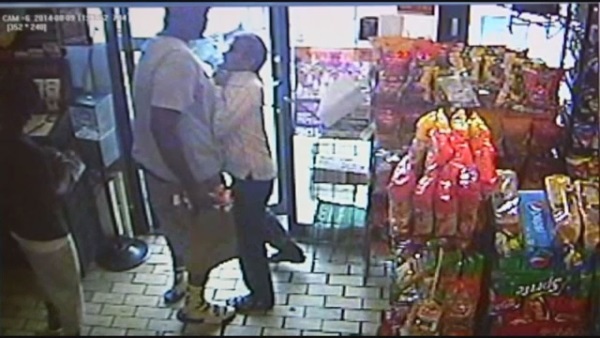 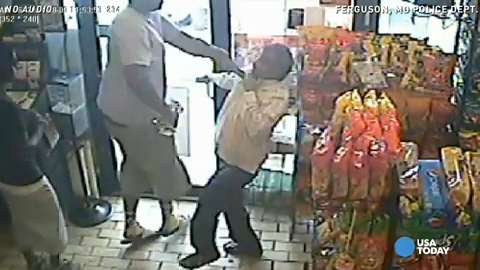
Brown caught on security video apparently stealing cigars from the Ferguson Market 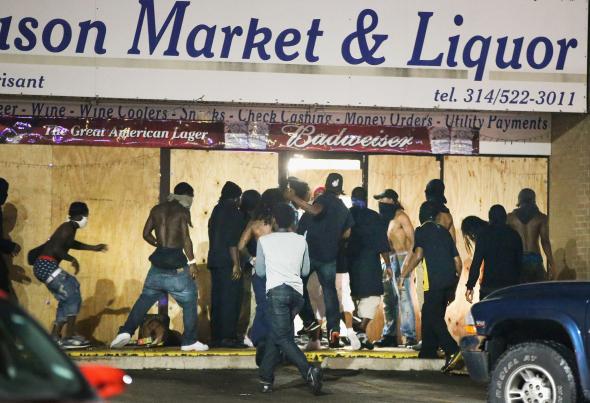
August 16 – Looting the
Ferguson Market & Liquor Store where Brown stole the cigars August 12 – The Rev. Al Sharpton – ever ready to stir up racial anger in the name of "justice" – on the steps of the St. Louis Missouri Court House with Michael Brown's father Michael
Brown, Sr. (t-shirt), St. Louis attorney Crump, and Lesley McSpadden – Brown's mother ... cheering on those who turn out to "fight racial injustice." 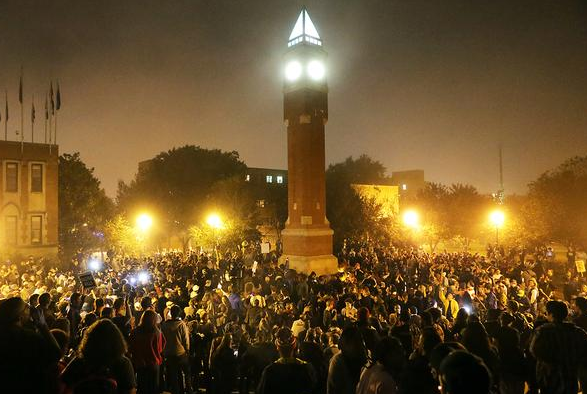 October 2014 – Students at St. Louis University protesting against injustice and poverty 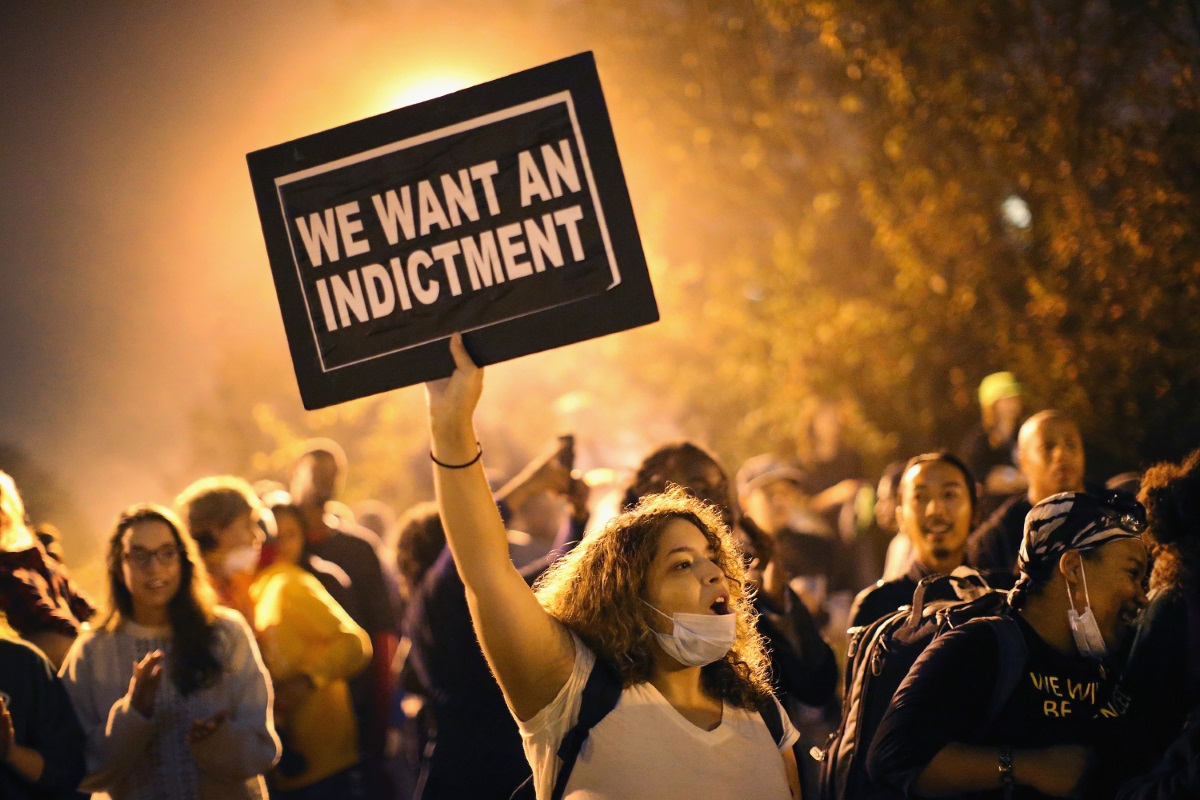 November 2014 – Anger that the Grand Jury decision did not go in the direction social-justice warriors wanted 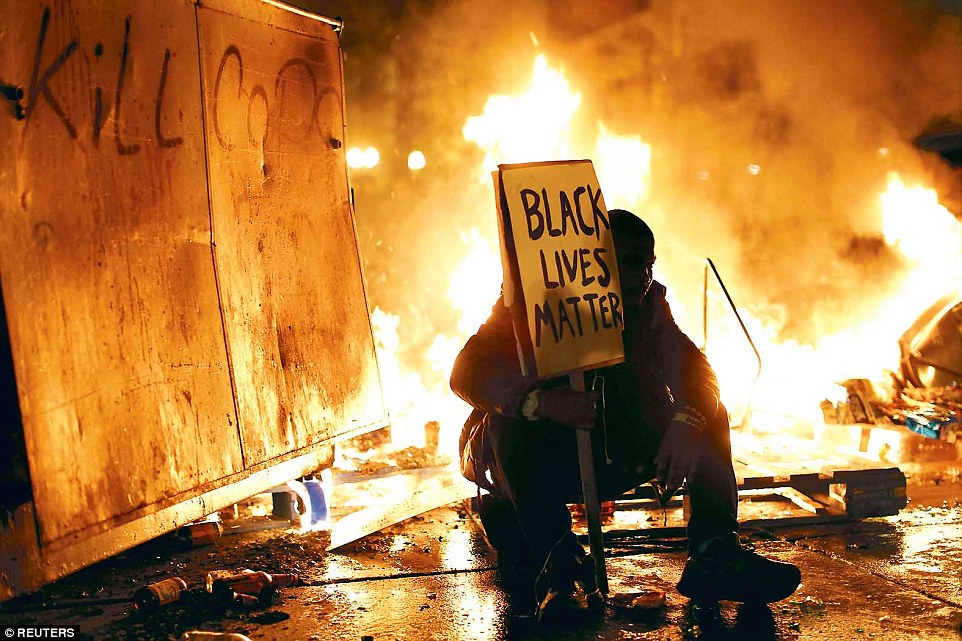 "Black Lives Matter" and "Kill Cops" 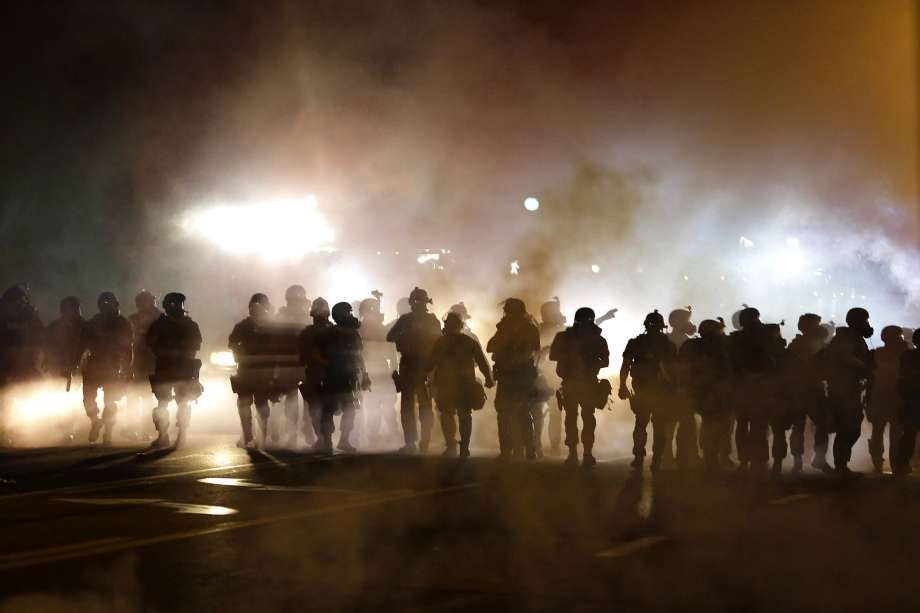 More violence in Ferguson (November 2014)
|

